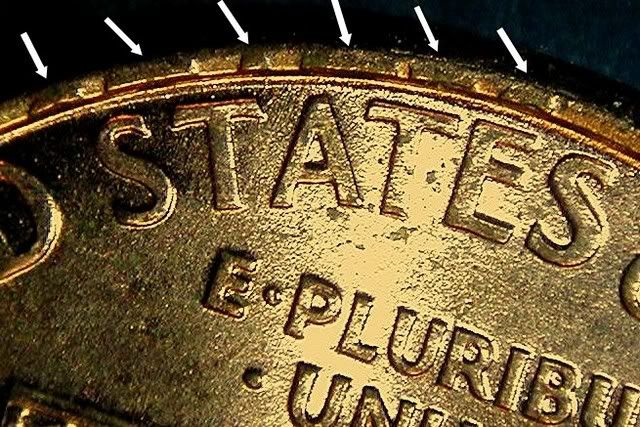First I found a 1958D penny that has truncated designes and lettering on the rim.
These devices look to be about the right size as if a penny planchet was use to test the distance of the dies for a quarter, with the test-piece being re-struck as a penny. What would I call this? I still haven't matched the exact designs to any other coin yet. I also bought an indian-head penny that bears the same kind of evidence.
Secondly, I have an 1877 indian-head penny, that has distinctly differing thickness to the rims from one side to the other. If a non uniform thickness to the planchet is struck, I'd imagine that the design would be weak where the planchet is thinnest. Is a non uniform planchet considered an error/variety? Would this non-uniform strike lessen the grade? (I've seen some dimes that were struck from rusty dies that graded in ms even though they looked G at best.)
Thanks for your help, and if I can find any more of those "rim-struck" coins I'll try to pick them up.
Russell Wilcoxon



Comment